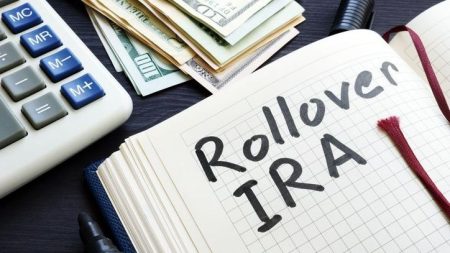Building up some retirement savings in a Roth account when you already have a significant traditional 401(k) at age 55 can make sense. For one thing, withdrawals from Roth accounts, unlike traditional 401(k) withdrawals, are generally tax-free in retirement. Roth accounts are also exempt from Required Minimum Distribution (RMD) rules, and Roth withdrawals won’t affect taxation of Social Security benefits or Medicare premiums. If you stop making traditional 401(k) contributions, however, you’ll lose current tax deductions. And, if you expect to be in a lower tax bracket after retiring, sticking entirely with the traditional 401(k) now may make more sense. You’ll also want to consider whether income-based limits on Roth contributions will apply in your case. Your planned age of retirement is another key factor.
A financial advisor can help you decide whether to contribute to a traditional 401(k) or a Roth account calls by running financial models of different scenarios.
Roth IRA vs. 401(k)
It may make sense for a 55-year-old with a sizable traditional 401(k) account to pivot to making Roth contributions, but that is not always the case. Deciding whether or not to start contributing to a Roth account comes down to assessing the benefits and drawbacks of a Roth IRA when applied to a specific situation. Roth benefits include:
Roth IRAs also have some disadvantages, including:
- No tax deductions from current income for contributions.
- Higher current taxable income can reduce eligibility for income-based tax credits.
- Income caps restrict Roth IRA contributions.
- Smaller contribution limits than 401(k)s, and no matching.
A key element in this balancing act is whether you expect to be in a lower tax bracket after retirement. If so, it may make less sense to contribute to a Roth now. Making contributions to a pre-tax account such as a traditional 401(k) instead will save money now and may also, assuming the retiree is in a lower tax bracket, reduce overall tax liability.
Forecasting future tax liabilities calls for making educated guesses based on assumptions about changes in tax brackets and changes in income. If the assumptions are not accurate, the educated guesses may be wrong as well. One way to hedge in this situation is to take a hybrid approach by contributing to both traditional 401(k) and Roth accounts. Having some funds in both types of accounts can give a you helpful flexibility in future tax planning. You can also consult a financial advisor who can help you make projections for various retirement scenarios which can help you weigh your options.
Having a $1.2-million 401(k) at age 55 suggests that generating sufficient income from that source for a comfortable retirement won’t be a major issue, assuming you don’t plan to retire early. If you do plan to retire early, bear in mind the five-year rule. This rule means that, in most cases, you have to wait five years after establishing your Roth account before you can withdraw earnings without owing taxes.
Bottom Line
Pivoting to make contributions to a Roth IRA can make sense for a 55-year-old who expects to be in a lower bracket after retirement. Roth funds grow tax-free, are free from RMD rules and generally can be withdrawn tax-free in retirement. However, given the difficulty of forecasting future tax liabilities, it may make sense to contribute to both traditional 401(k) and Roth accounts. This will give a retiree access to both current tax deductions and sources for untaxed withdrawals in retirement.
More Retirement Tips
- Choosing between a traditional Roth or a Roth 401(k) involves making a number of assumptions and seeing how events might turn out given different scenarios. A financial advisor can help model those outcomes and improve the quality of this decision. Finding a financial advisor doesn’t have to be hard. SmartAsset’s free tool matches you with up to three financial advisors in your area, and you can interview your advisor matches at no cost to decide which one is right for you. If you’re ready to find an advisor who can help you achieve your financial goals, get started now. You can also read SmartAsset reviews.
- Figure out how much your 401(k) account will be worth in the future after accounting for your contributions, employer matches and investment growth using SmartAsset’s 401(k) calculator.
- Keep an emergency fund on hand in case you run into unexpected expenses. An emergency fund should be liquid — in an account that isn’t at risk of significant fluctuation like the stock market. The tradeoff is that the value of liquid cash can be eroded by inflation. But a high-interest account allows you to earn compound interest. Compare savings accounts from these banks.
Read the full article here
















